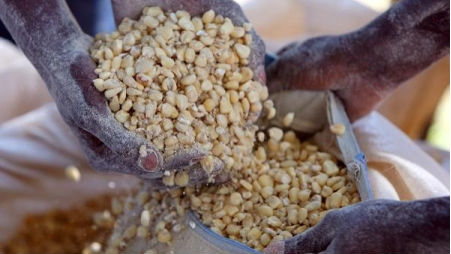How Humanitarian Aid Prolongs Wars

Think again before you reach into your pocket to give; the money you donate to feed starving children may actually be prolonging war in places like Darfur and Somalia, says Dutch journalist Linda Polman. Darfur is ruled by quite a sophisticated military regime which charges aid organizations for every move they are allowed to make in Darfur. “For every single person that works for aid organizations, for every single kilo of rice, aid organizations are forced to pay what they call, ‘taxes,'” she tells Big Think. “So the military regime there is actually cashing in on a lot of aid organizations for quite large amount of money. That money goes towards the war effort of the military regime of Darfur and is actually being used for the ethnic cleansing and the genocide taking place in Darfur.”
A recent UN Security Council investigation found a similar situation in Somalia, named the most corrupt country in the world by Forbes magazine. The World Food Program is the largest aid organization in Somalia, with $415 million per year to spend on food aid. But the investigation found that “over $200 million of that money is disappearing straight into the pockets of warlords and of local staff who will also spend it on their own corrupt programs there,” says Polman.
In Afghanistan aid money gets shifted back and forth between the over 2,000 organizations currently on the ground. “Between the moment that the donor government makes money available and the moment that somewhere in Afghanistan a carpenter will actually start building a school or a clinic, you might have five or six or even seven in-between organizations who will all keep 15% or 20% of the aid money,” says Polman. “So in the end, the aid money that is left is actually quite little to complete the projects with.” Is that corruption, bad management, or both?
There are an estimated 40,000 international NGOs, according to the United Nations Development Program. And this does not take into account the millions of local NGOs. India for example has an estimated 1.2 million local NGOs. This explosion of aid organizations in recent years means that aid efforts, especially after natural disasters, are uncoordinated. “On the ground, you have this chaos of donors not formulating a mutual agenda for the benefit of the victims and you have this chaos of an average of 1,000 aid organizations per disaster who are not negotiating with each other, not meeting with each other about what is the best way to achieve anything there,” Polman tells us. “It is obvious, the rich worlds are dividing their power which makes it easy to manipulate them.” What is needed is a more coordinated approach, so aid organizations can make a “fist” against the manipulations of aid money, she says.
Part of the solution also lies with the public, she tells us. “We have sort of invented charity because it makes life easier for us.” When we see picture of children with flies in their noses and distended bellies, we can “buy off our conscience” by donating $10. But that’s too easy, says Polman. It’s our duty to do serious research and ask tough questions of the charities we want to support to know exactly how the money we donate will be spent. “Question them about their own knowledge about the country and about their knowledge about a goal for that country…And if you’re not convinced, maybe find another good cause; there are millions and millions of people on this planet who could do with a little help.”





